We went to Java to visit Borobudur, the largest Buddhist temple complex in the world: an unmissable opportunity to deepen its sacred architectural symbolism, following in the footsteps of scholars such as Stutternheim, Paul Mus and Mircea Eliade.
di Marco Maculotti
Built - it is handed down - around 800 AD by the Sailendra Dynasty (literally "Lords of the Mountains"), belonging to the Mahāyāna School, the temple of Borobudur it is considered, as well as the most immense Buddhist sacred construction ever built, also one of the most impressive in the world, comparable only to some Egyptian, Indian and Mesoamerican temple complexes.
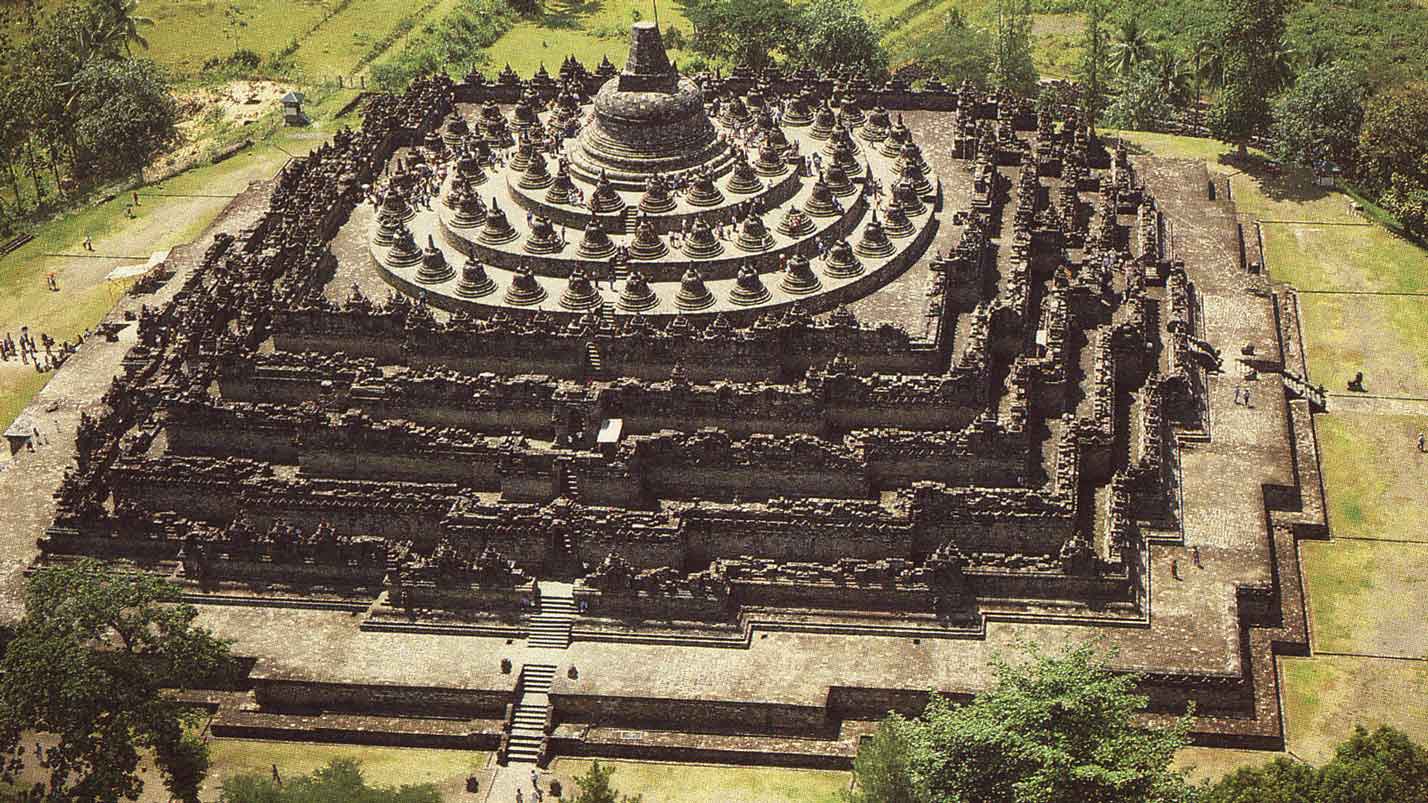
Located about 40 km from Yogyakarta, on the island of Java, the Borobudur structure has a base of 123 × 123 meters and a height of 35 meters and is made up of more than two million colossal blocks of stone. Its walls are covered with 2.672 bas-reliefs, of which more than 1.400 depicting stories from the life of the Buddha (for a total length that exceeds 5 km and an area that reaches 8 km²) and by 504 statues with his features (of which 432 with a serene face and 72 in meditation, sitting). Some scholars believe that although nowadays the colors of the paint have faded from the temple, the gray stone was originally painted in bright colors, just like a real, huge three-dimensional mandala: it is in fact only from above that, potentially, one could fully appreciate the complexity of the plant and the architectural structure of the sacred complex.
The choice of the place was also carefully studied according to the principles of the sacred geography: not far from the plain where the temple stands, there is a confluence of two rivers that recalls that of the sacred rivers Ganges and Yumna; not far away, stands a mountain range that can bring to the mind of the faithful the Himalayas or Mount Meru of the Hindu tradition. In addition, according to tradition, the Borobudur was built on one of the pivotal points of the "earth grid": a sideboard that recalls the one found in the nearby Bali, which enumerates a group of temples, the so-called Sad Kahyangan or "Six Sanctuaries of the World" (even if some lists count more than double), which are considered to be built in strategic geographic areas - "central" in the "mystical" geography of the island to ensure its spiritual as well as geological balance.
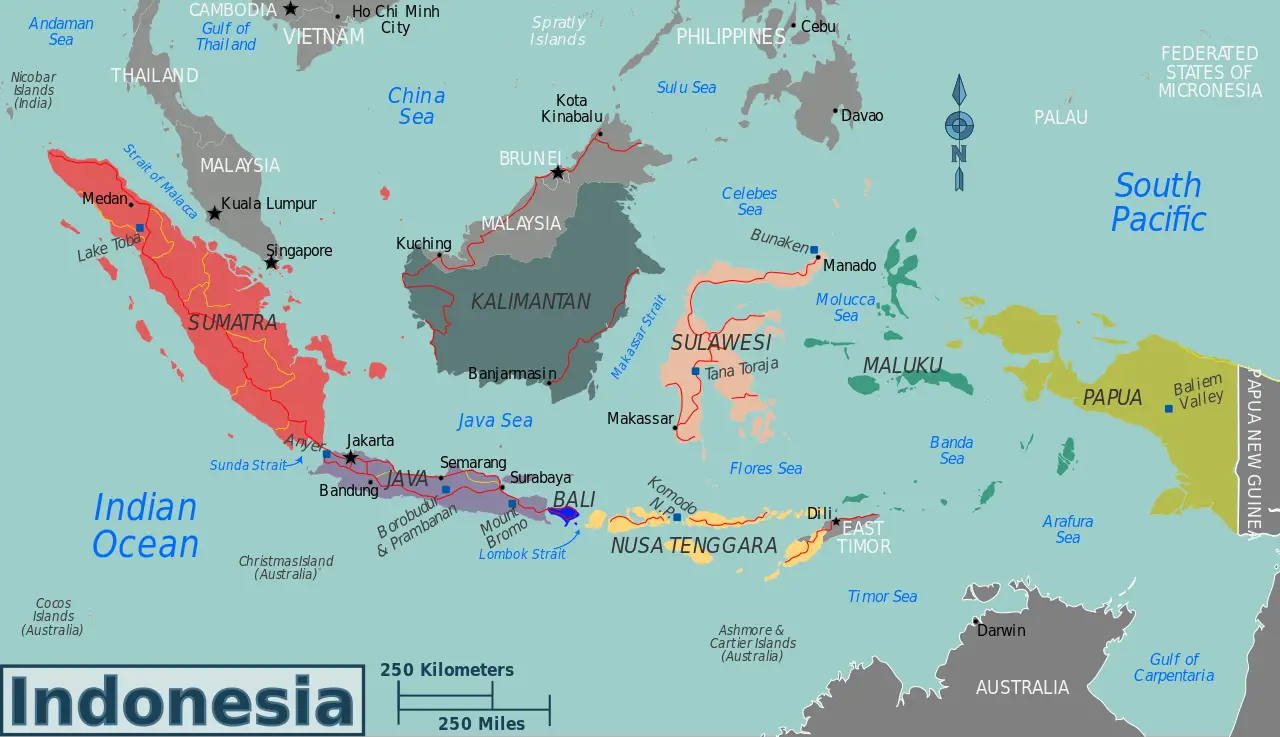
The numerous earthquakes and tsunamis, on the other hand, they are an extremely well-known reality in these islands located just above the so-called Pacific Rim; and perhaps it is no coincidence that the Borobudur temple, during the terrifying earthquake that occurred in 2006, remained almost miraculously unharmed (unlike, for example, the Prambanan temple complex, built a short distance away, which suffered the effects of the earthquake both in 2006 and in previous centuries).
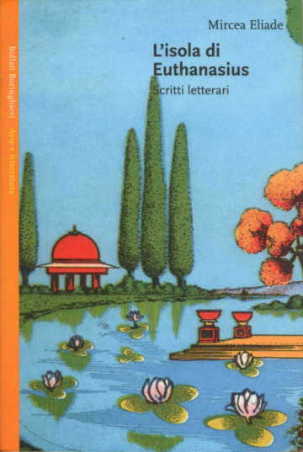 Here, we will talk - accompanying the observations with a selection of photos taken by us during the visit to the temple - of the symbolic importance of the Borobudur temple complex using the reading proposed by Mircea eliade in the essay Barabudur, symbolic templul, originally published in the «Revista Fundatiilor Regale», IV, 9, 1937 [pp. 605-617] and available in the Italian translation [Borobudur, symbolic temple] in the collection The island of Euthanasius. Literary writings published by Bollati Boringhieri [Turin, 2000], as well as the (colossal) text to which the Romanian historian of religions makes the most reference: Barabudur. Esquisse d'une historie du Bouddhisme fondée sur la critique archéologique des textes di Paul Mus, initially appeared in the «Bulletin de l'École française de l'Extrême-Orient» and then published in 1935 by Geuthner.
Here, we will talk - accompanying the observations with a selection of photos taken by us during the visit to the temple - of the symbolic importance of the Borobudur temple complex using the reading proposed by Mircea eliade in the essay Barabudur, symbolic templul, originally published in the «Revista Fundatiilor Regale», IV, 9, 1937 [pp. 605-617] and available in the Italian translation [Borobudur, symbolic temple] in the collection The island of Euthanasius. Literary writings published by Bollati Boringhieri [Turin, 2000], as well as the (colossal) text to which the Romanian historian of religions makes the most reference: Barabudur. Esquisse d'une historie du Bouddhisme fondée sur la critique archéologique des textes di Paul Mus, initially appeared in the «Bulletin de l'École française de l'Extrême-Orient» and then published in 1935 by Geuthner.
⁂ ⁂ ⁂
Already William F. Stutternheim [1927] had understood that the temple of Borobudur, considered in its architectural complex, is nothing more, in the first place, than the symbolic representation of the Universe. Paul Mus confirms this, and Eliade contributes to the hypothesis (now unanimously accepted by experts) with a 'refresh' of some of the main themes of his work: the temple as "Center", as imago mundi, and as a substitute symbol of the "Cosmic Tree" or the "Celestial Mountain", with the function of Axis of the world, or rather of the "Cosmic Axis" that supports the World in all its levels of manifestation, from the highest to the most material.
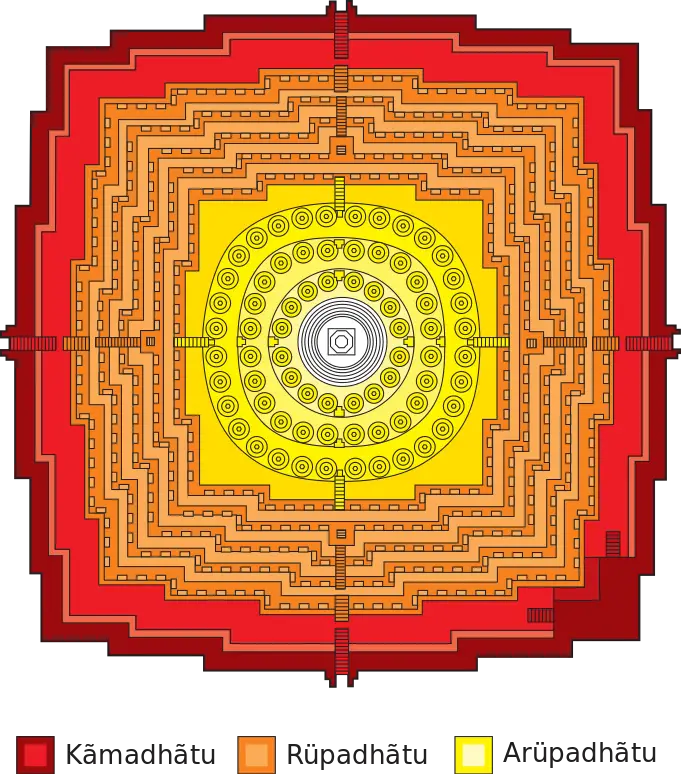
Paul Mus, however, had also noted that the Borobudur temple is ideally (when viewed or imagined from above) one yantra (literally, "instrument, constraint, harness"), that is to say an object, representation or diagram made in such a way as to symbolically summarize the doctrine and the Law (dharma), as it is, for example, in the Buddhist tradition - we have already said - the mandala. Thus Eliade, in the essay we use for this analysis, summarizes this intuition of the French anthropologist [Borobudur, p. 52]:
«The construction is such that by walking through it and meditating on each scene of the numerous galleries adorned with bas-reliefs, the pilgrim assimilates the Buddhist doctrine. It is worthwhile to insist on this point: the temple is a symbolic body of the Buddha and, as such, the faithful "learn" or "experience" Buddhism by visiting it, with the same effectiveness as if recited the words of the Buddha or meditated on them. In all cases, he approaches the supra-real presence of the Buddha. The doctrine is the "verbal body" of the Buddha; the temple, or stupa, is its "architectural body" »
In this sense, in the Buddhist tradition the temple embodies the Law (dharma) and therefore indicates the ways to reach salvation (nirvana). This is why the Borobudur temple is built in such a way as to transliterate in stone, in the various levels of the structure, in the bas-reliefs and in the statues, the "spheres" of meditation. Precisely for this reason it can be said with good reason that Borobudur is a real one "Stone book", subject to a real one reading by the visitor who really knows how to understand it.
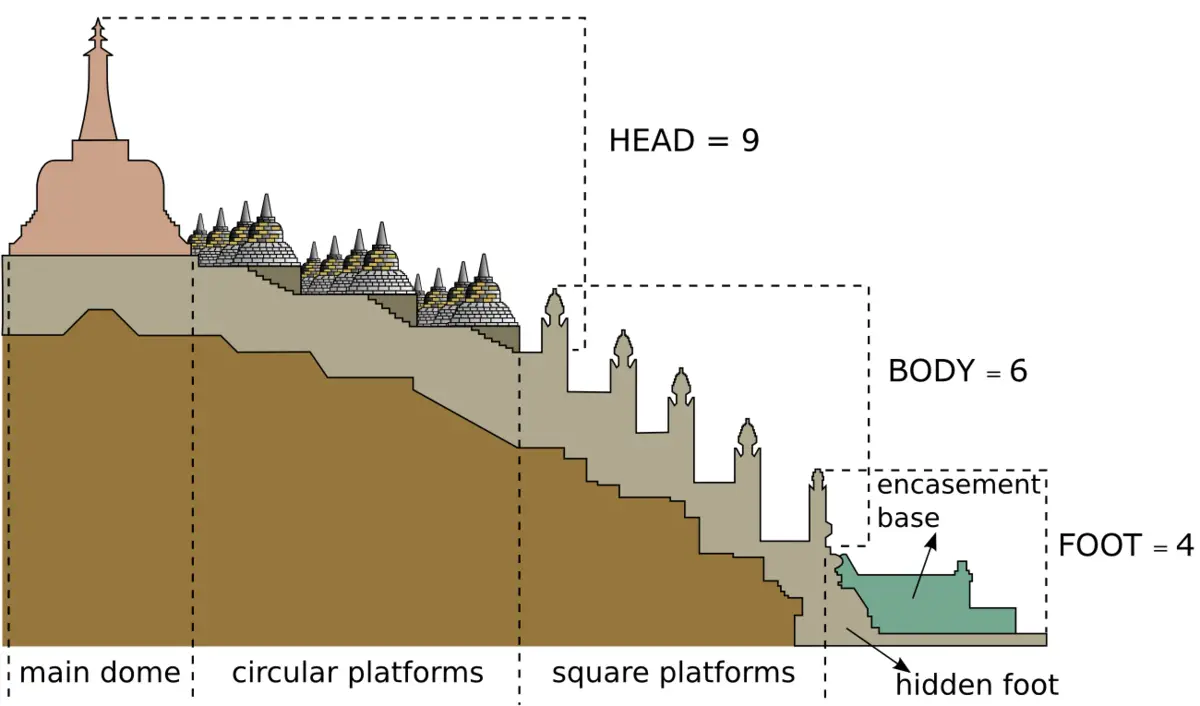
The building is in fact structured in ten terraces, corresponding to the ten phases of the spiritual journey towards perfection, divided in turn into three groups, equivalent to the realms of saṃsāra: the first level represents life in the spirals of desire ("kingdom of desire" or kāmadhātu); the five square levels represent the progressive emancipation from the senses ("realm of pure form" or rupadhatu); the last three circular terracesfinally, they symbolize the progressive path towards the definitive nirvana ("Realm of the formless" or arūpyadhātu), symbolized by the highest level, at the axial peak of the structure.
It is also curious, but nevertheless significant for certain hypotheses concerning the existence of a "primordial tradition" spread throughout the world - we add - that the lowest level of the structure (the one that represents the "inferior" plane of the manifestation "), as it is not infrequently seen in the temples of the Indonesian area, terms in megalithic ophidic faces, strikingly similar to those found in Mexican terraced temples, for example in the Toltec-Mayan one of Chichén Itzá, where it represents, illuminated during the summer solstice, the generative power of the supreme god Quetzalcoatl in the act of descending to earth in the form of sunlight.
⁂ ⁂ ⁂
Returning to the general picture that arises before our eyes by observing the sacred architecture of Borobudur, we directly give the floor to Mircea eliade which, paraphrasing Mus's studies, states [pp. 55-56]:
«The pilgrim does not have a total and direct vision of the temple. Seen from the outside, Borobudur resembles a multi-story stone terrace. The galleries leading to the upper terraces are built so that the visitor only sees the bas-reliefs and statues of the niches. The initiation therefore proceeds gradually. Meditating on each single scene, the pilgrim walks the two and a half kilometers of tunnels in uninterrupted meditation. [...] The temple cannot be "assimilated" from the outside. In fact, the statues are not seen. Only the initiate, walking through the galleries, gradually discovers the levels of supersensible reality, the degrees of meditation in their iconographic representation. He discovers them and assimilates them. "
It is also worth mentioning a couple of quotes from the same Paul Mus [cit. in Eliade, Borobudur, pp. 55-56, notes 10 and 11]:
«The buddhas at first visible in the niches, then half hidden behind the bars of the stupa […] They punctuate a path towards enlightenment, through an increasingly less perceptible matter, and without, moreover, reaching the ultimate goal here, postponed to the moment of final annihilation, as it is stupa closed gives to understand. The images that parade, on the other hand, along the gallery terraces, would have no other purpose than to fix and support the mind of the monks in the passages through the Rūpadhātu. A stone book, as mentioned, but offered for meditation, not for current reading. […] It does not appear, as in the Gothic naves, as the symbol of a rapid leap of faith, nor of a salvation that can be reached in a lifetime, or even - through grace - in a single instant; but, considered in its sculpted mass, it represents the interminable ascension that the doctrine divides among innumerable existences. You can't go up instantly. It is necessary to wander for a long time in the cycle of birth and death, rising only little by little. "
⁂ ⁂ ⁂
It has already been mentioned that the stupa, a typical Buddhist monument that is found in large numbers in India, Ceylon and Burma, present in large numbers on the three levels of Borobodur immediately below the highest one, is at the same time an architectural image of the Cosmos and a "mystical body" of the Buddha: equally , the Vedic altar is configured in Hinduism as a "Center", image would and Agni's "mystical body", god of fire and the very image of the sacrificial act. It is Mus himself who understands that [cit. in Eliade, Borobudur, p. 59, note 14]:
«The essential of these symbolisms is the reconstitution of the God-All, Prajāpati, dispersed at the moment of creation: the altar will be his reconstituted person, under this name or under that of Agni, his "son", who is identified with him if necessary. "
And here, in the context of the correspondences between macro and microcosm, we can go further. It is in fact known that often and willingly stupa, "Mystical body" of the Buddha, contains sacred relics which, as Eliade says, “give him a life absolute, supra-temporal "; nor, on the other hand, is it relevant whether these remains really belonged to the physical manifestation of the "Buddha" or to the remains of any "enlightened one". The important thing is, in the Buddhist tradition as in almost the whole "traditional" world, that the temple is "animated" by a ritually operated sacrifice, in the moment between the end of its construction and the beginning of its sacred and religious use.
We find the same custom, in order not to go too far, in Mongolia, in the nomadic-shamanic culture of the steppes; but also, extending the boundaries of our research, throughout the rest of the world, from black Africa (also on the occasion of the inauguration of a metallurgical furnace, which is configured as the "temple" of the blacksmith [cf. Eliade, Metal arts]) to Europe, up to the Americas and the remote islands of the Pacific. And, perhaps, even the cult of the relics of Christian saints in pre-modern Europe has not too dissimilar a source.
these human sacrifices "They had the meaning of animating the building, which for this needs a 'soul, of a life"; in this way "not only does the construction last […], but it is animated by a sacred life, it is therefore a world in itself" [p. 53]. The sacrificed subject becomes somehow imago of Prajãpati / Agni or of the Buddha, whose "body" ("physical" but also "spiritual" and "doctrinal" body) has undergone in illo tempore a disintegration and must therefore, by means of the ritual, be reconstituted, exactly like the body of Osiris in the Egyptian myth and like that of Dionysus Zagreus devoured by the Titans in Greek myth.
⁂ ⁂ ⁂
Nor should we forget to mention the "political" value of stupa as a "Center": build one stupa at the center of a territory - Eliade writes [p. 57] - is equivalent to "consecrating" this territory to the Buddhist Law, al dharma, but also, at the same time, to “bind it to the sovereign who, in so far as cakravartin, is considered the "center" of this royal "compass rose" which is the empire », in turn imago human, anthropomorphic hierophany of Mount Meru, Axis of the world and center of the Cosmos, fixed in its axial position and imperturbable to the events of the saṃsāra, from whose "summit" he observes the Cosmos unfolding in its multiple manifestation.
Lo stupa, therefore, but also the Vedic altar, and the temple more generally, like image would, as representation of a "sacred space", but not only: also as the very center of power - not only "spatial", but also - "thunderstorm", in all senses. It is Eliade himself who points out how Borobudur - and any other temple built according to traditional Indo-Buddhist dictates - can also be interpreted as a representation of a "Sacred time" which must also be - step by step, level by level - reconstituted and therefore, in the end, re-found, with a parallelism traceable, perhaps, in the Western tradition, in the nostalgia for the origins aimed at a hoped-for return of the Edenic Golden Age. Thus Eliade [p. 58]:
«The construction of the" center "did not take place only in the order of" space ", but also in that of" time ". In other words, the temple became not only the center of the Cosmos, but also the indicator quadrant of the "sacred year" and therefore of "time". As stated in the Shatapatha Brāhmana, the Vedic altar is the materialized time, it is the "year"; statement equally valid for temples. The construction takes into account the four "horizons" (space, the Cosmos), but also the direction, the temporal scansion of the niches adorned with bas-reliefs. "
⁂ ⁂ ⁂
With these quick indications, which we have provided in large part by suggesting from Eliade's essay, the reader can get an idea for himself about the "world view" typical of the so-called "traditional" Indo-Buddhist societies: in the complex of Borobudur the architectural technique, however incredible and worthy of all possible and imaginable praise, is first of all used as a means to accompany the visitor in reading what is, in an exceptional cosmic space-time vision, hidden behind the veil of all the symbols that constitute it the "body" which the faithful must rebuild e find.
It is important to underline it, in closing, once again: we are dealing here with the "body of the Buddha" understood as Absolute Consciousness, eternal and timeless bliss, indifferent to the game of creation and the rounds of saṃsāra (and, therefore, also of the "Buddhic body" - Western esotericism would say "mercurial" - inherent in the recesses of the human being who knows it to mature), but also of the Cosmic Law itself, the dharma. Thus, regulating according to the correspondences - we have said - space-time existing between macrocosm (Cosmos / Buddha /dharma) - carved in gray stone as if it were really a "stone book" -, and microcosm (human consciousness reincarnating through the cycles of death and rebirth), the initiate wandering the ten levels of the temple of Borobudur can experience mystical asceticism in the truest sense of the term imaginable.
MM
PS - A personal thanks for the realization of this reportage goes to Gigi, my «guide» and companion of wanderings during most of the trip to Indonesia; in Fina, with whom I visited the temple complexes of Borobudur and Prambanan; to Sonja and Kartika, for the kind hospitality during my stay in Yogyakarta.
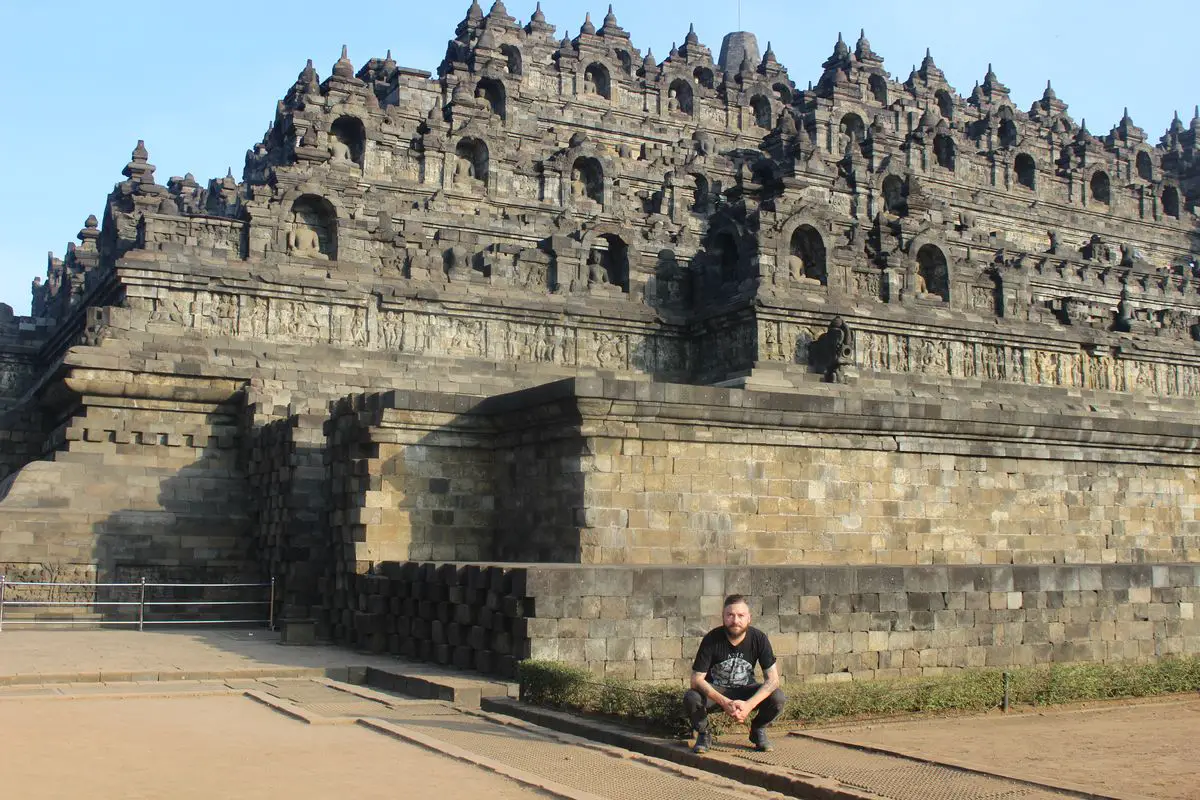


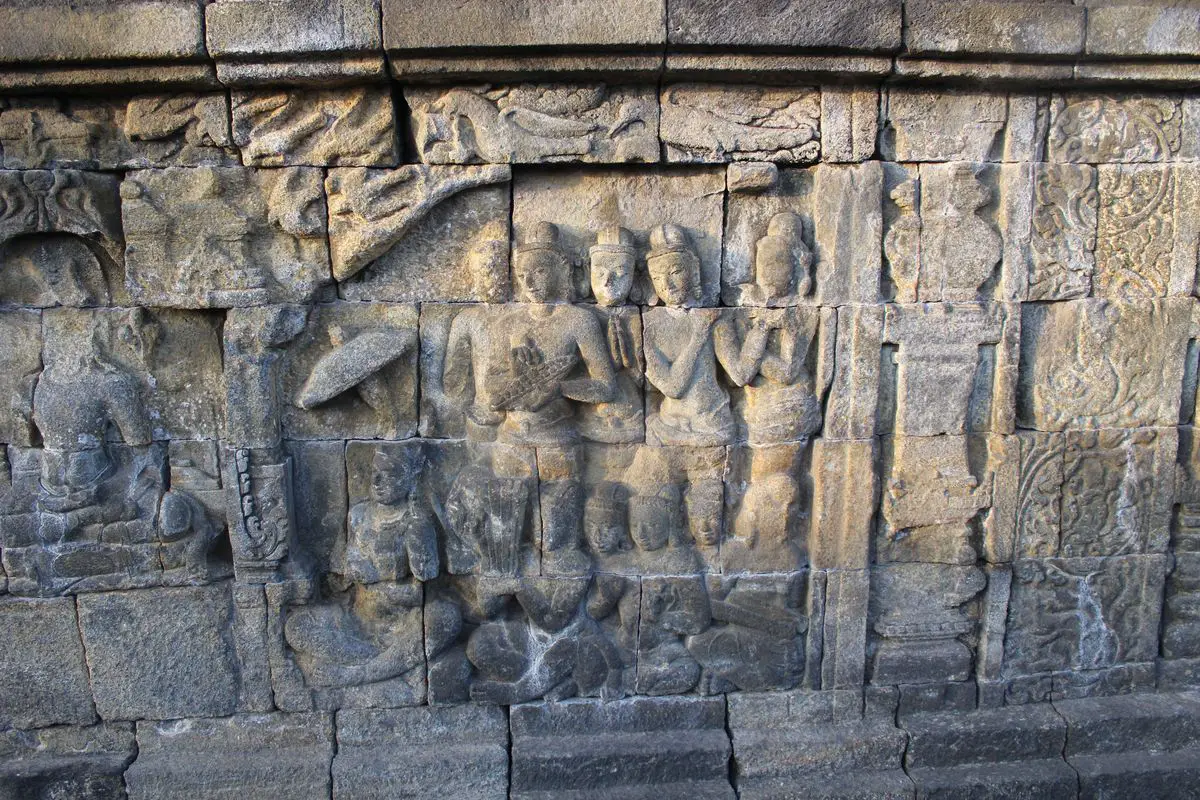
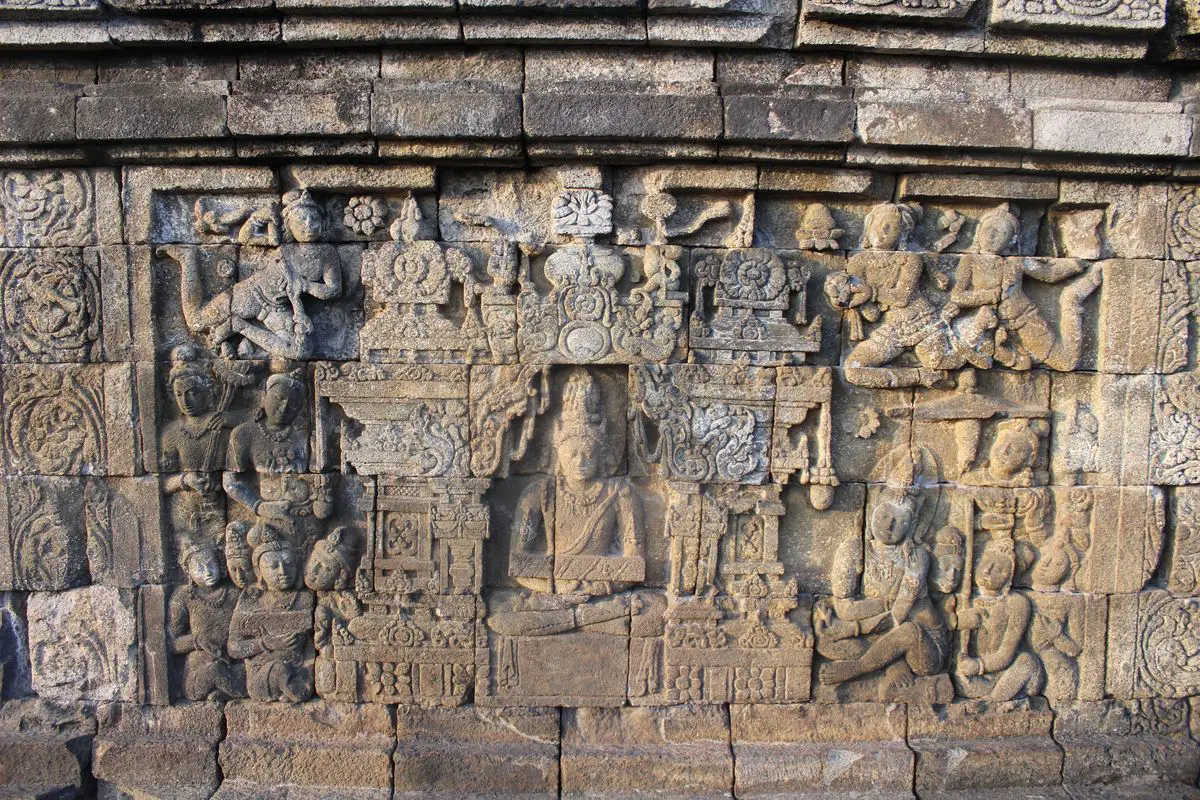
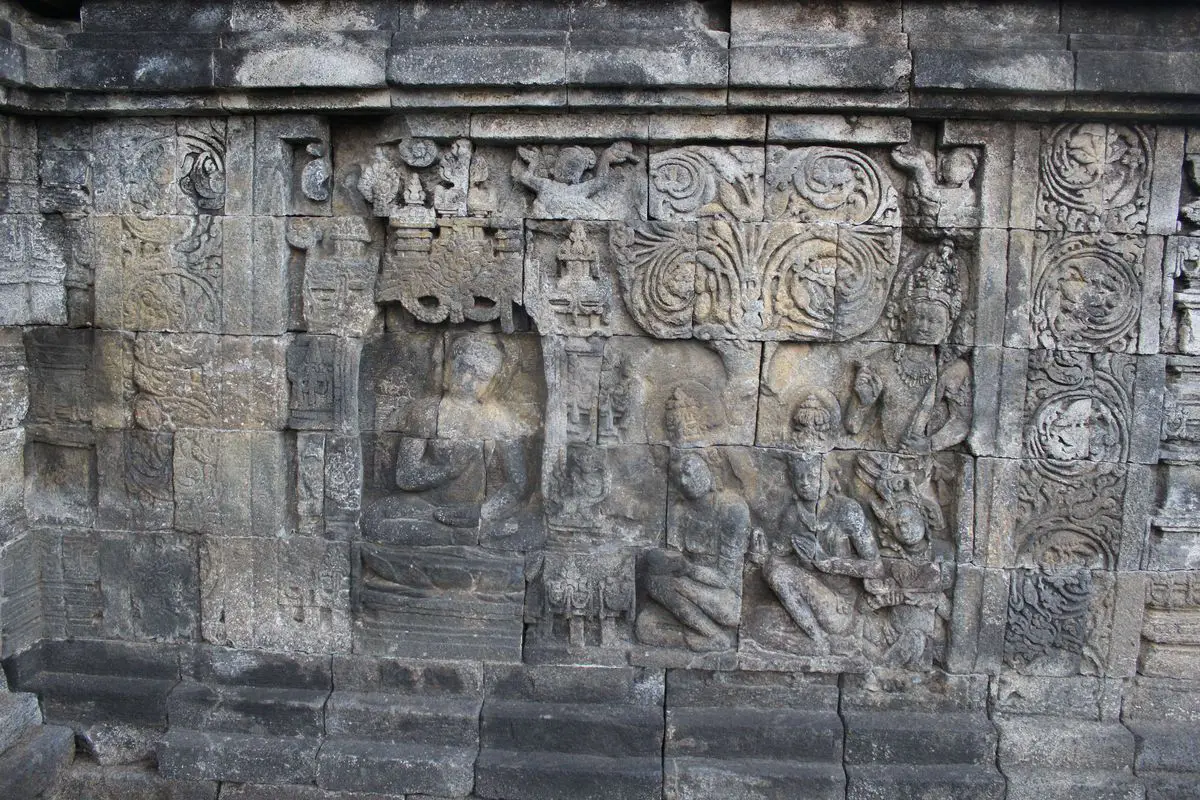
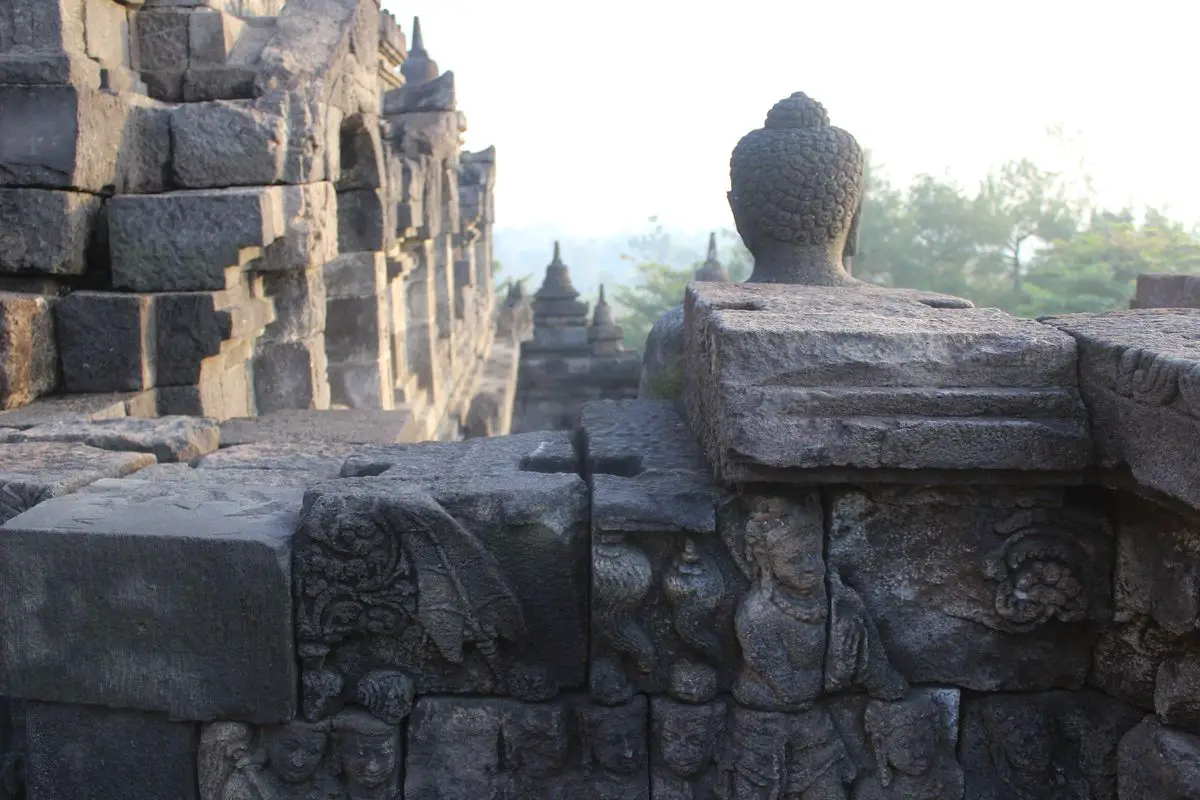
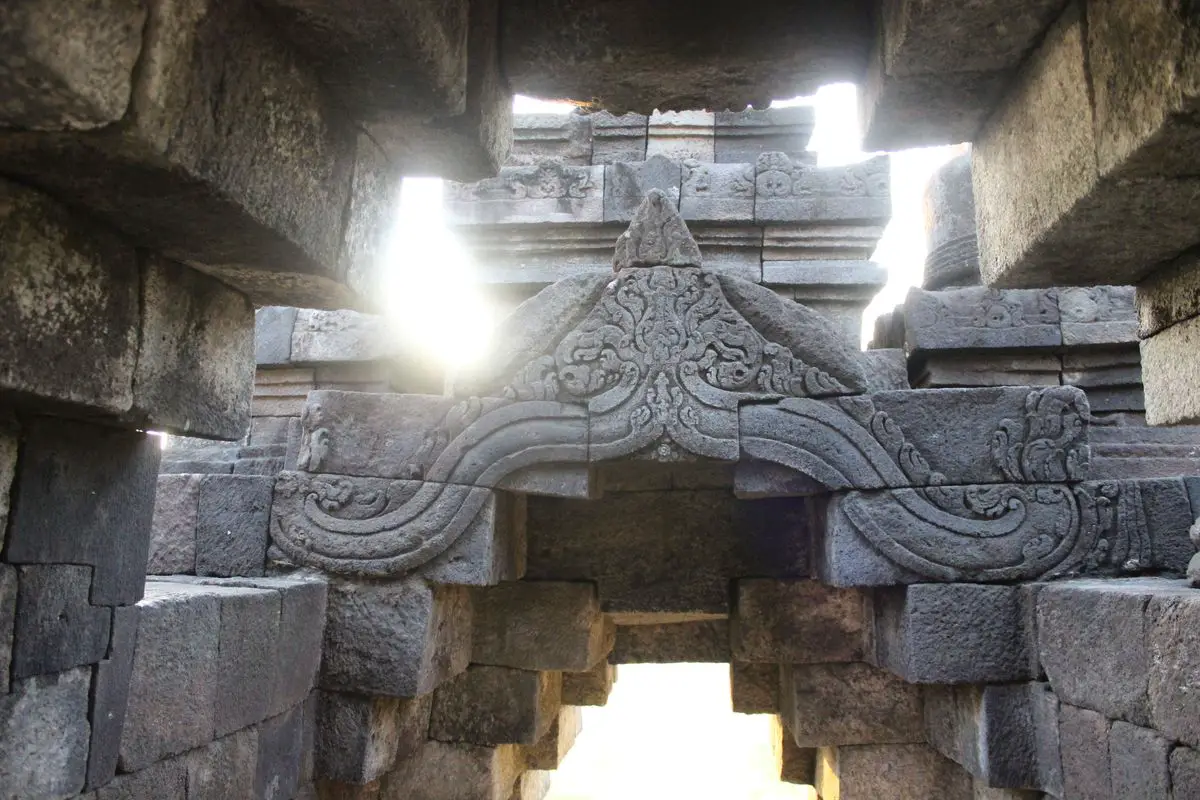
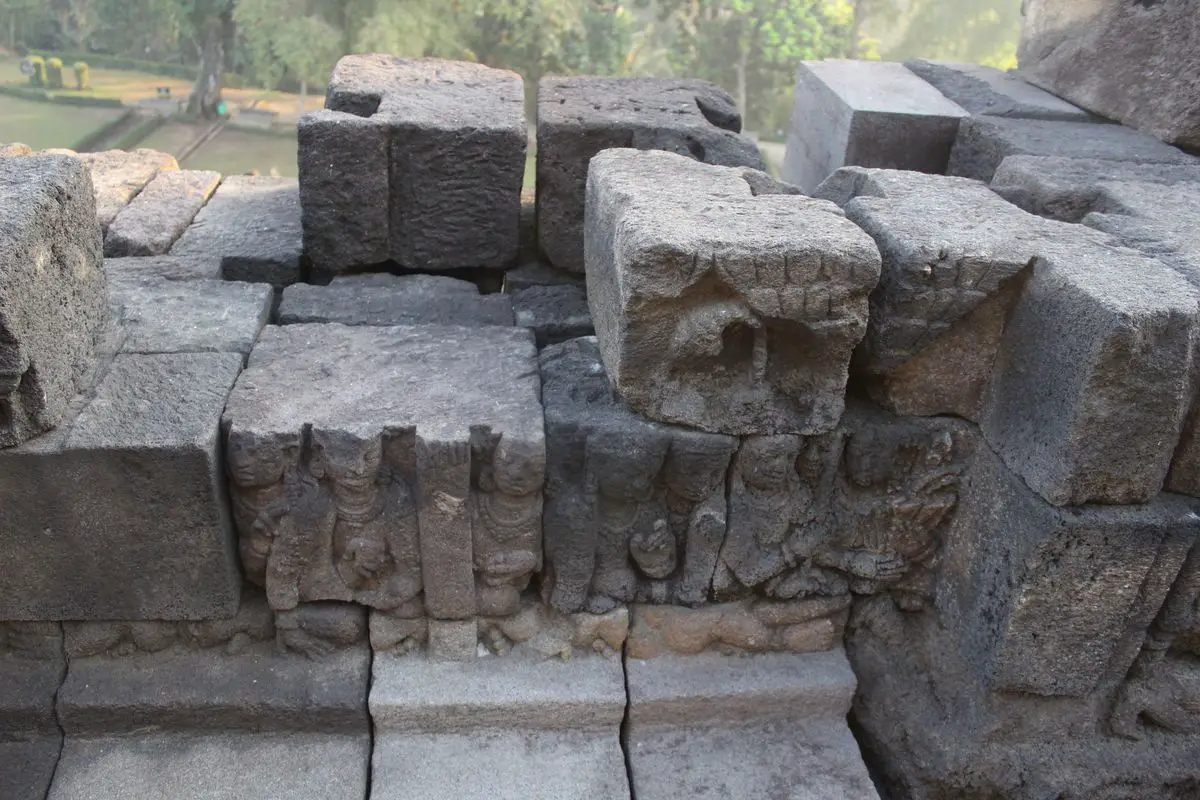
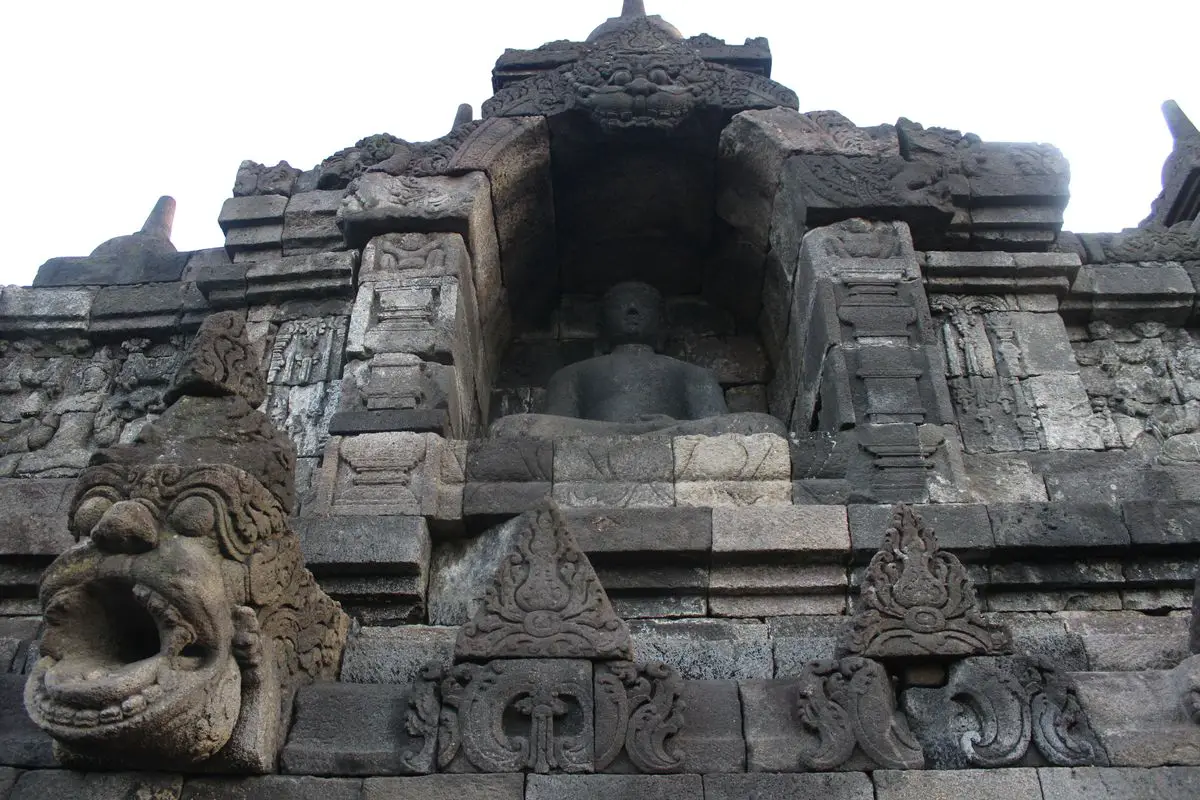
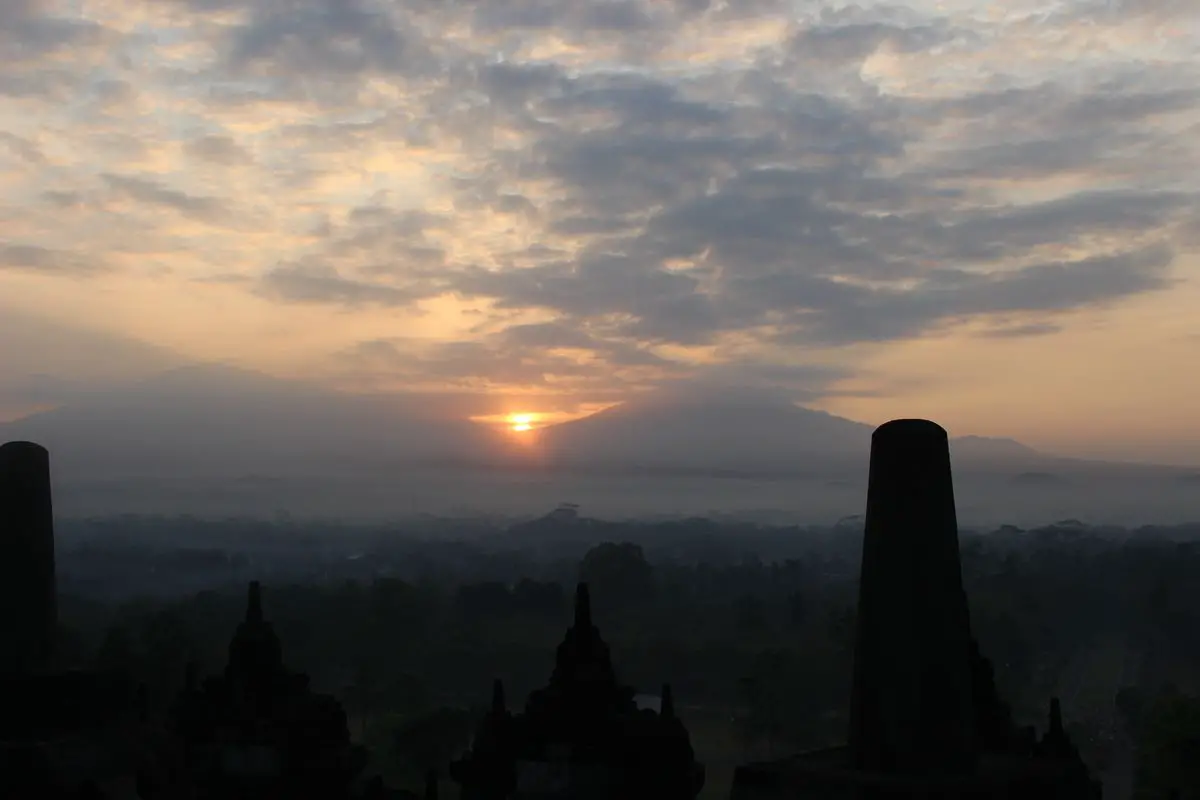

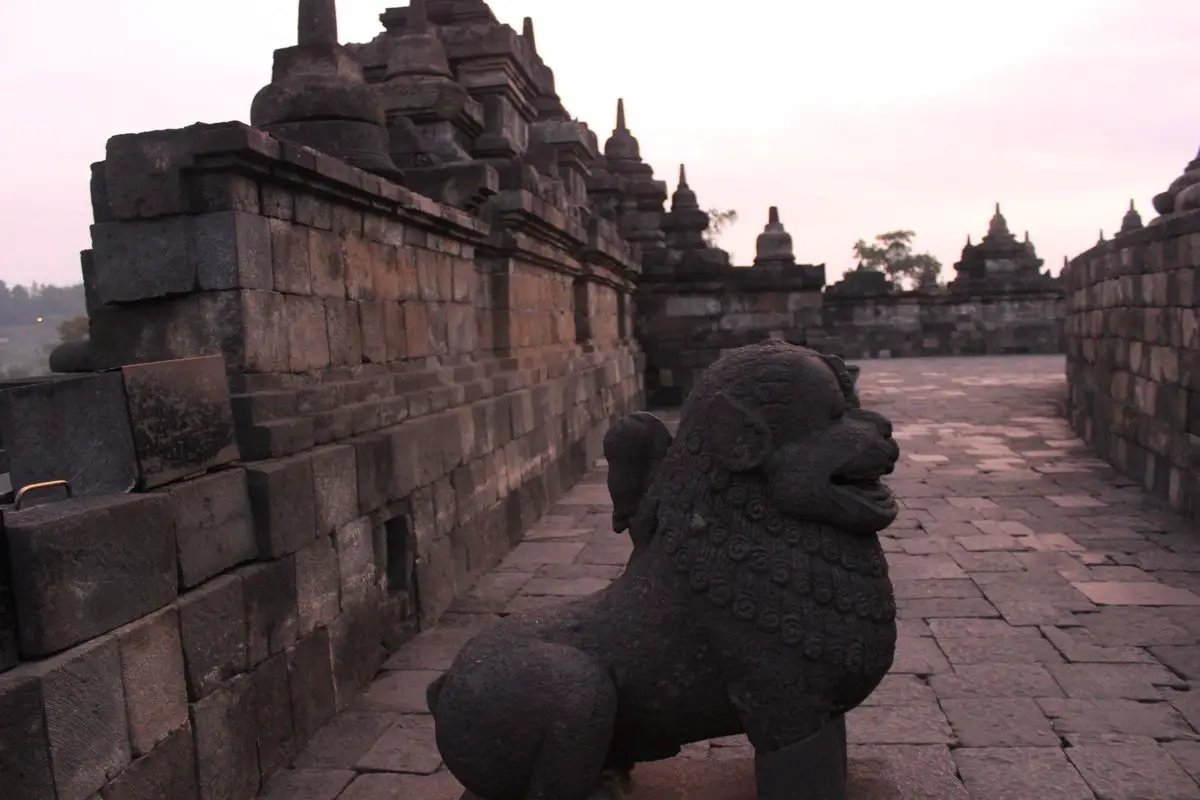
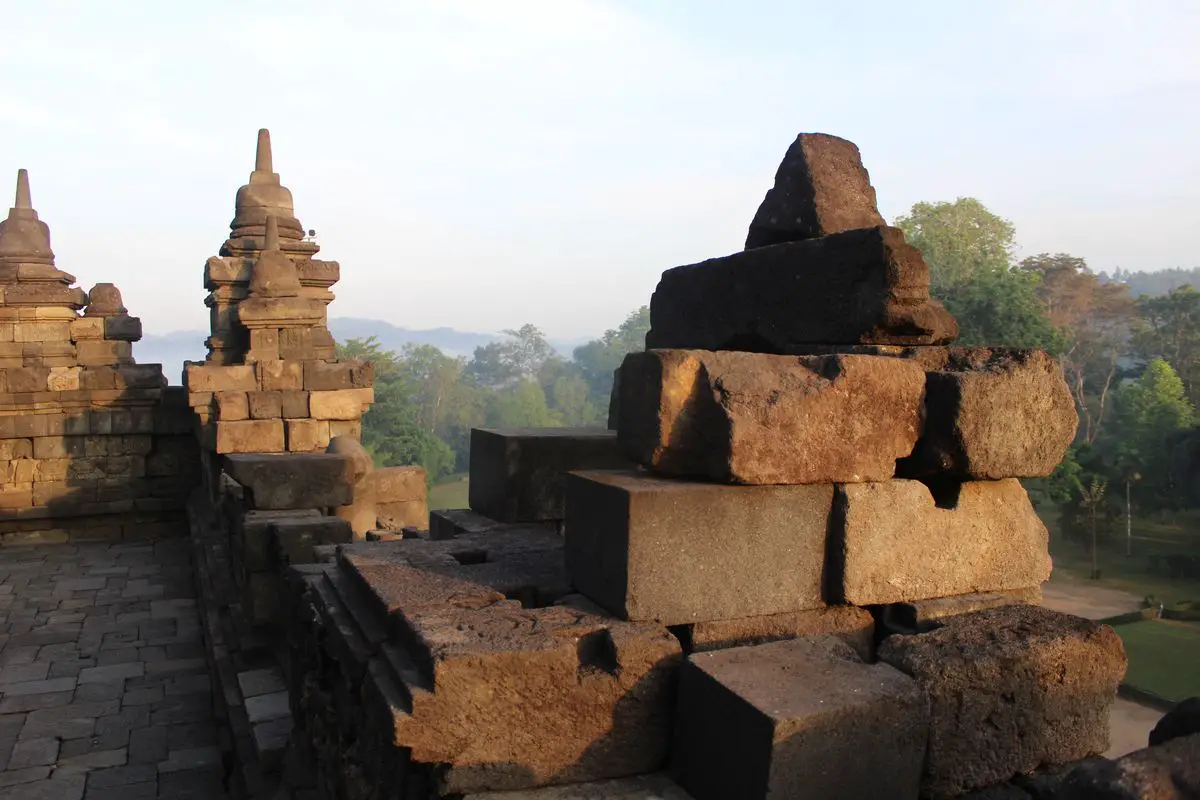
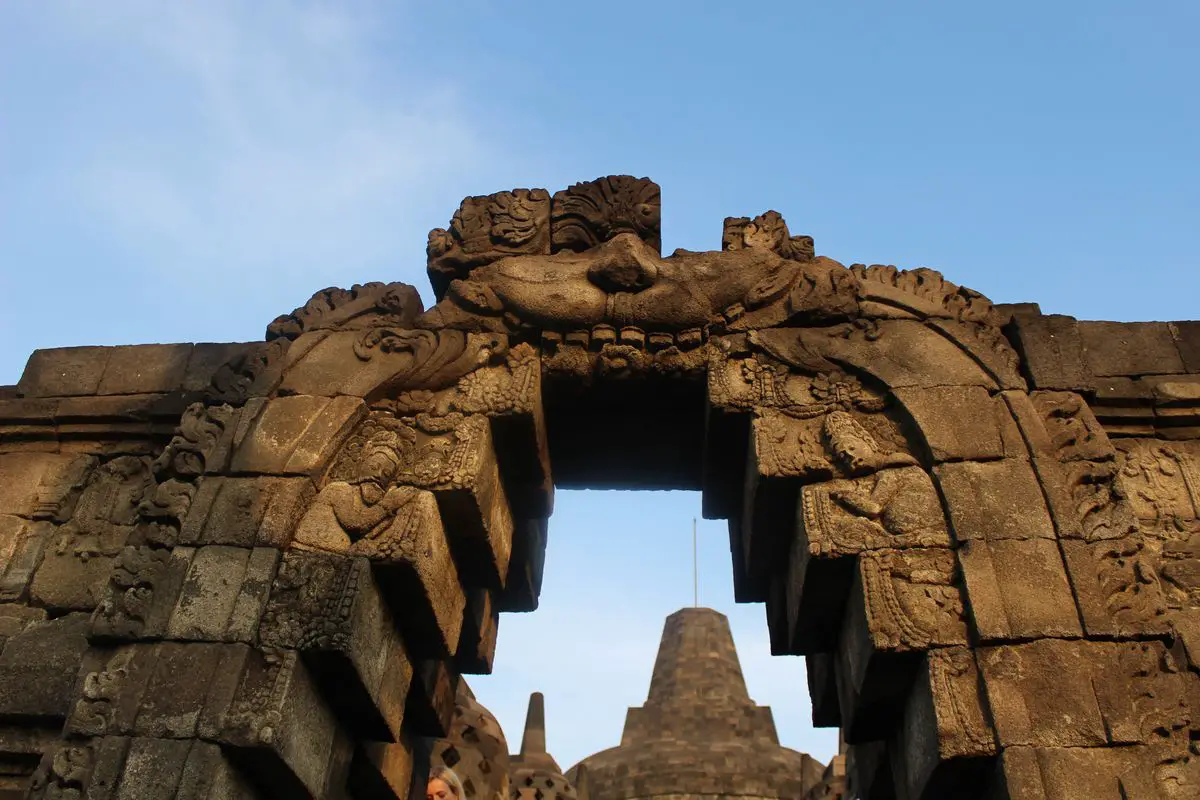
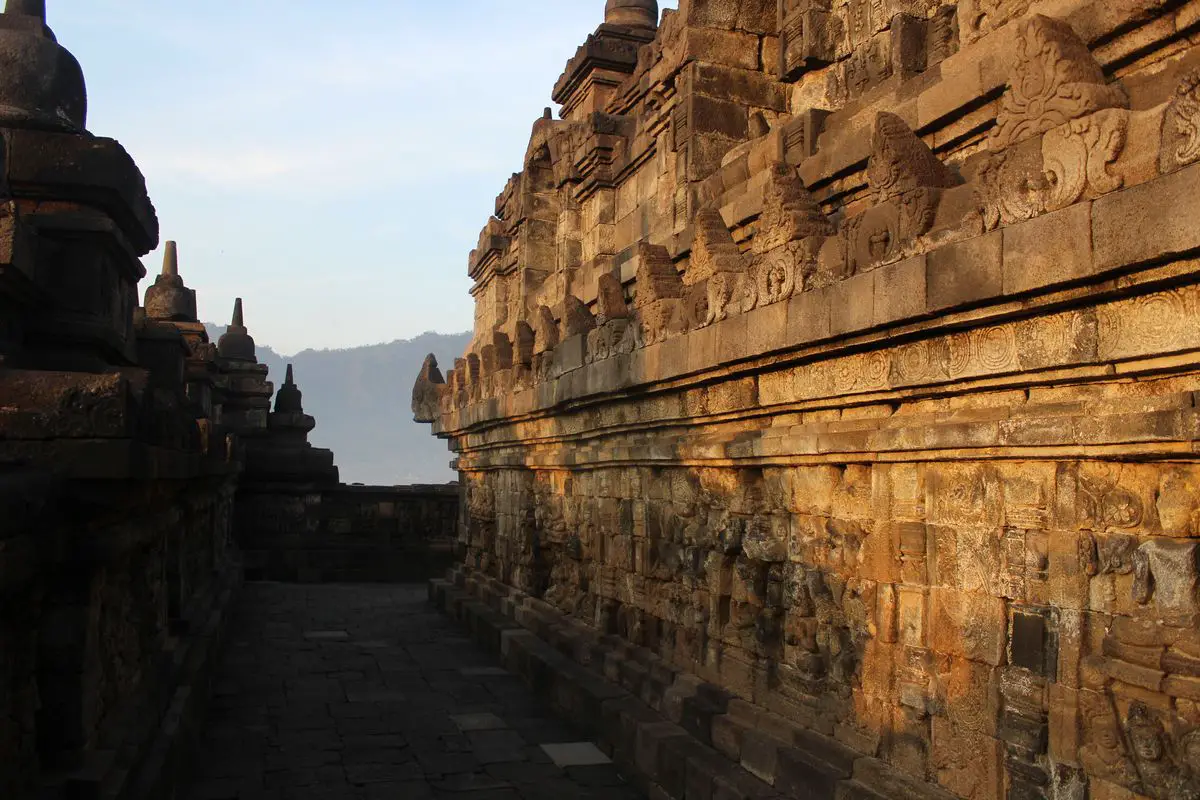
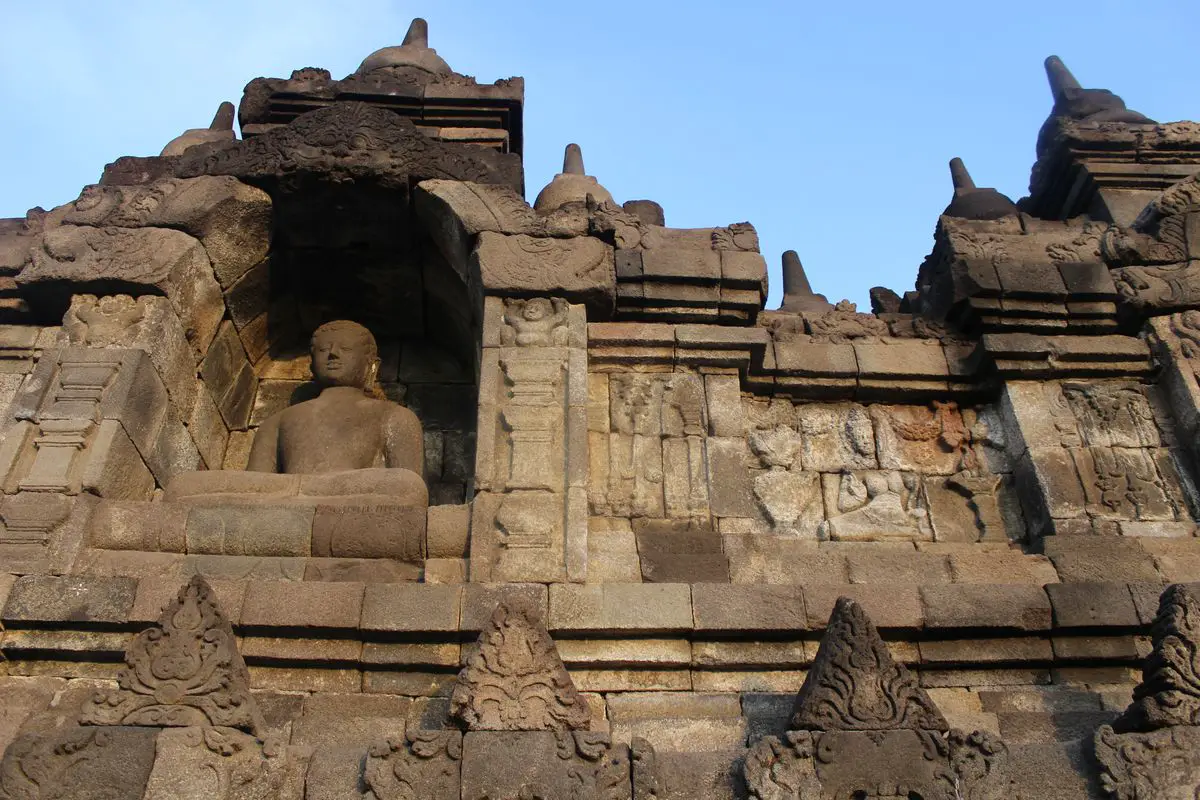
5 comments on “Borobudur, "imago mundi" and "stone book" of the dharma"